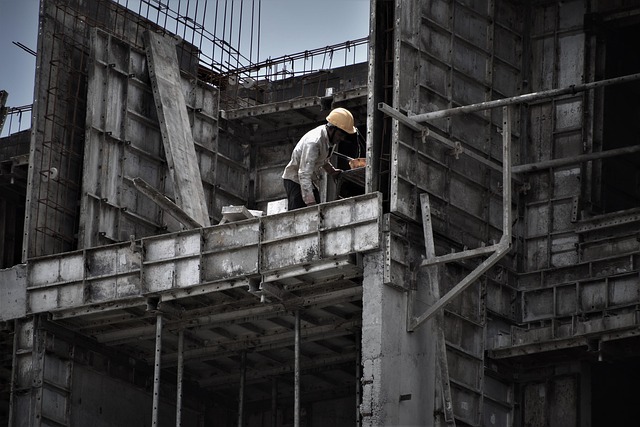Professional utility locating solutions are indispensable for navigating and mapping the intricate web of buried utilities, including water, sewage, gas, power, and telecom lines. These solutions employ advanced technologies like ground-penetrating radar (GPR), electromagnetic detection, and RFID to identify, map, and verify the details of these underground infrastructures accurately. By integrating real-time data with geospatial mapping software, professionals create precise digital representations, enhancing safety, efficiency, and sustainability in construction and urban development projects. These solutions overcome challenges posed by diverse infrastructure ages, deteriorations, and construction activities, ensuring safe and effective identification of underground utilities.
Underground infrastructure, a labyrinth of pipes, cables, and wires, is vital for modern societies. However, identifying these critical elements accurately presents significant challenges due to their depth, complexity, and diverse materials. This article explores the intricacies of underground infrastructure and the challenges in pinpointing utilities precisely. We delve into professional utility locating solutions, highlighting advanced techniques and technologies that revolutionize infrastructure mapping. Understanding these benefits and best practices is essential for efficient and safe urban development.
Understanding Underground Infrastructure and Its Complexities
Underground infrastructure refers to the intricate network of utilities and services buried beneath our cities and towns, including water mains, sewage systems, gas pipelines, power cables, and telecommunications lines. Accurately identifying and mapping these assets is a complex task that requires advanced technology and professional expertise.
Professional utility locating solutions play a pivotal role in navigating this underground labyrinth. These solutions employ sophisticated tools like ground-penetrating radar (GPR), electromagnetic detection, and radio frequency identification (RFID) to pinpoint the location, depth, and type of buried utilities. By integrating real-time data and utilizing geospatial mapping software, professionals can create comprehensive digital representations of underground infrastructure, enhancing safety, efficiency, and sustainability in urban development and construction projects.
Challenges in Accurately Identifying Utilities
Accurately identifying underground infrastructure, such as utilities, presents several challenges. One of the primary difficulties lies in the diverse and often complex nature of utility systems themselves. Different types of utilities—including water, gas, power lines, and telecommunications cables—are buried at various depths and in varying configurations, making their precise location and condition difficult to determine without specialized equipment and expertise.
Additionally, age and deterioration can lead to inaccurate maps or outdated records, further complicating the process. Construction activities also pose a significant challenge, as ongoing excavation and re-routing can change the underground landscape. Professional utility locating solutions employ advanced technologies like ground-penetrating radar (GPR), electromagnetic locators, and sonar to overcome these hurdles. These tools help in creating detailed images of what lies beneath the surface, ensuring safe and effective utility identification even in the most intricate urban settings.
Professional Utility Locating Solutions: Techniques and Technologies
In the realm of professional utility locating solutions, advanced techniques and technologies play a pivotal role in accurately identifying underground infrastructure. These innovative methods involve the use of ground-penetrating radar (GPR), electromagnetic location systems, and mechanical excavation with locators. GPR, for instance, transmits radio waves into the ground to create images of subsurface utilities, ensuring precise positioning. On the other hand, electromagnetic location systems emit low-power radio signals that interact with metal components in pipes and cables, allowing for their detection.
Mechanical excavation paired with locators involves manual digging guided by real-time data from utility locating devices. This hands-on approach is particularly crucial in urban settings where precise mapping of underground utilities is essential to avoid damage during construction or maintenance projects. Together, these professional utility locating solutions not only enhance safety but also streamline infrastructure management, ensuring that vital services remain uninterrupted and that potential hazards are mitigated effectively.
Benefits and Best Practices for Effective Infrastructure Mapping
Effective infrastructure mapping offers numerous benefits, especially in the realm of efficient asset management and safety. Accurate maps allow professionals to navigate complex underground landscapes, ensuring that construction projects, maintenance tasks, and emergency responses are carried out with precision. By utilizing professional utility locating solutions, organizations can significantly reduce the risks associated with accidental damage to critical infrastructure.
Best practices for mapping include adopting a comprehensive approach, integrating advanced technologies like ground-penetrating radar (GPR) and utilizing real-time data from various sources. Collaboration between stakeholders is essential; sharing information ensures consistency and accuracy in the mapped data. Regular updates and maintenance of these maps are vital to reflect changes in the underground network, making it a dynamic process that adapts to urban development and infrastructure evolution.
Accurate identification of underground infrastructure is paramount for safe and efficient construction and maintenance projects. By understanding the complexities and adopting advanced professional utility locating solutions, we can significantly mitigate risks and enhance project outcomes. Techniques such as ground-penetrating radar, electromagnetic location, and GPS-enabled devices play a crucial role in identifying utilities beneath our feet. Implementing best practices, including comprehensive mapping, stakeholder communication, and regular updates to infrastructure databases, ensures that these professional utility locating solutions remain effective and adaptable to an ever-changing landscape.
